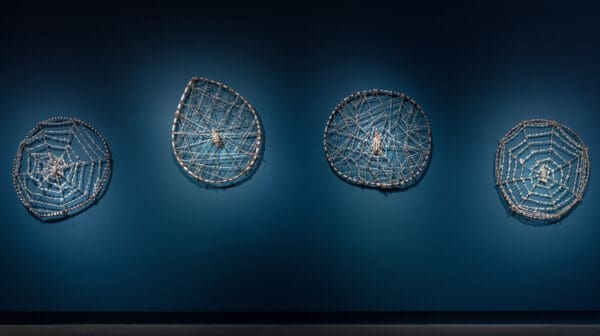
Piercing the veil
A new exhibition at Buxton Contemporary finds a rich complexity in the shadowy terrain between life and death.
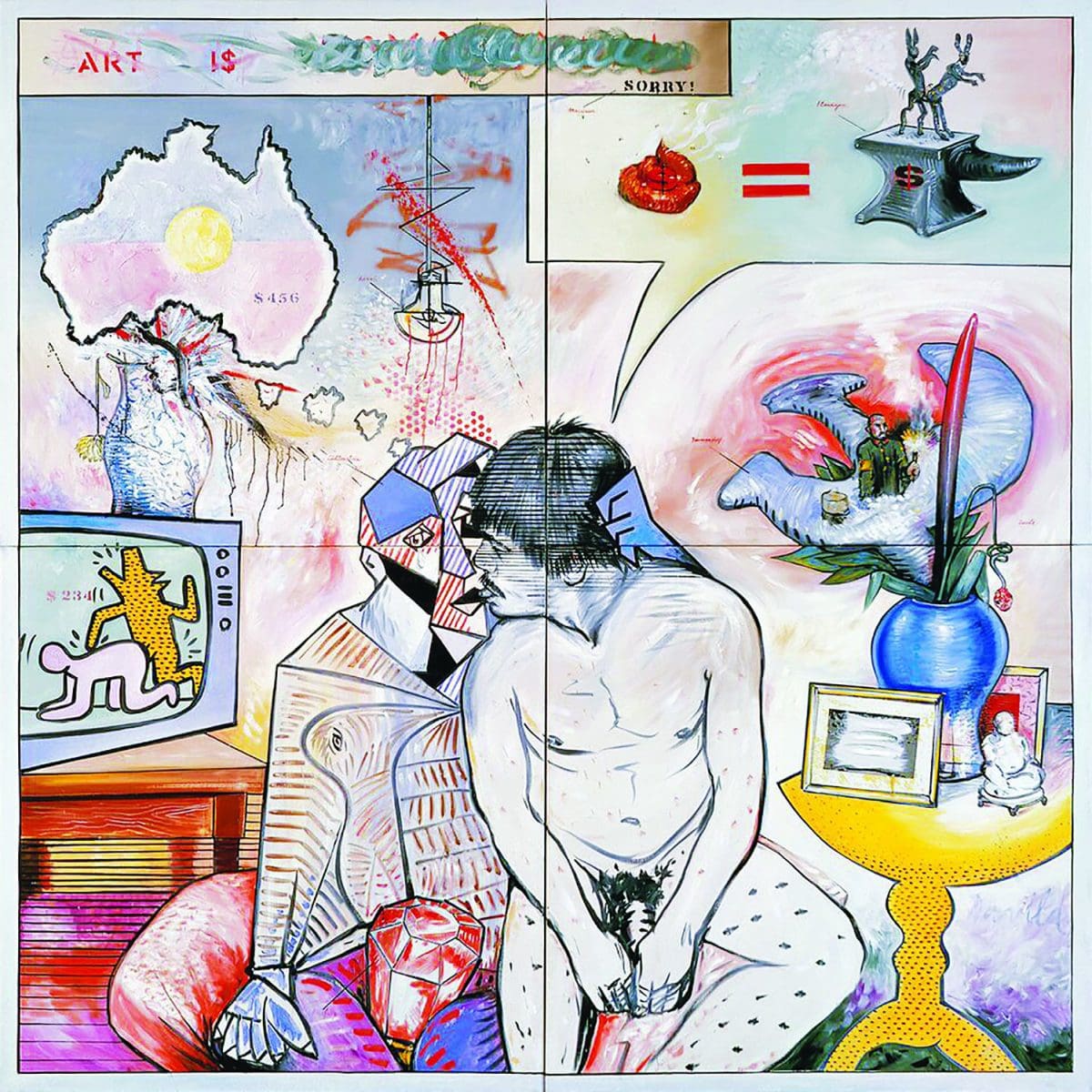
Juan Davila, Art i$ homosexual, 1983–86, Oil on canvas, 274 x 274 cm © Juan Davila, Courtesy Kalli Rolfe Contemporary Art
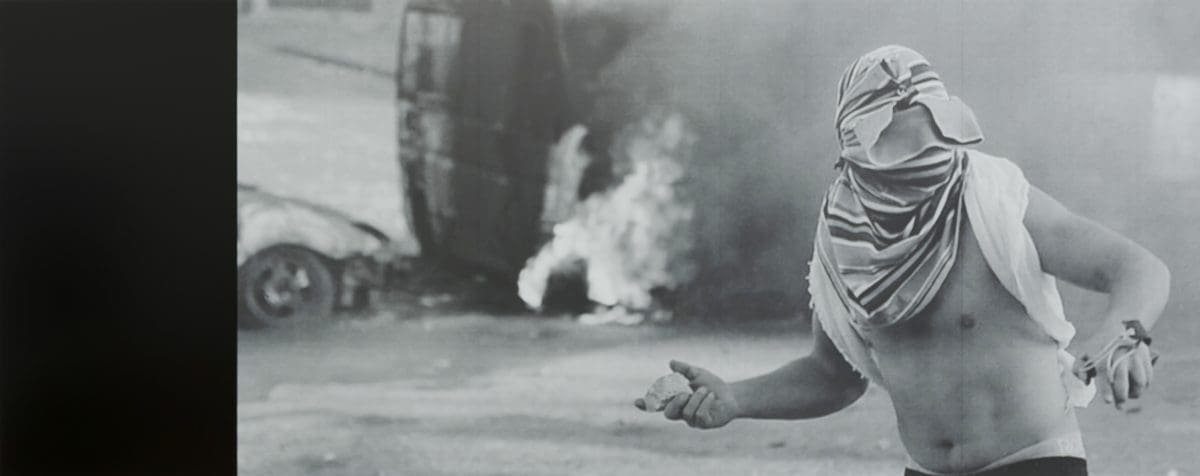
Marco Fusinato, The Infinitive 3, 2015, White UV halftone ink on black aluminium, 250 x 625 cm. Courtesy of the artist and Anna Schwartz Gallery, Melbourne
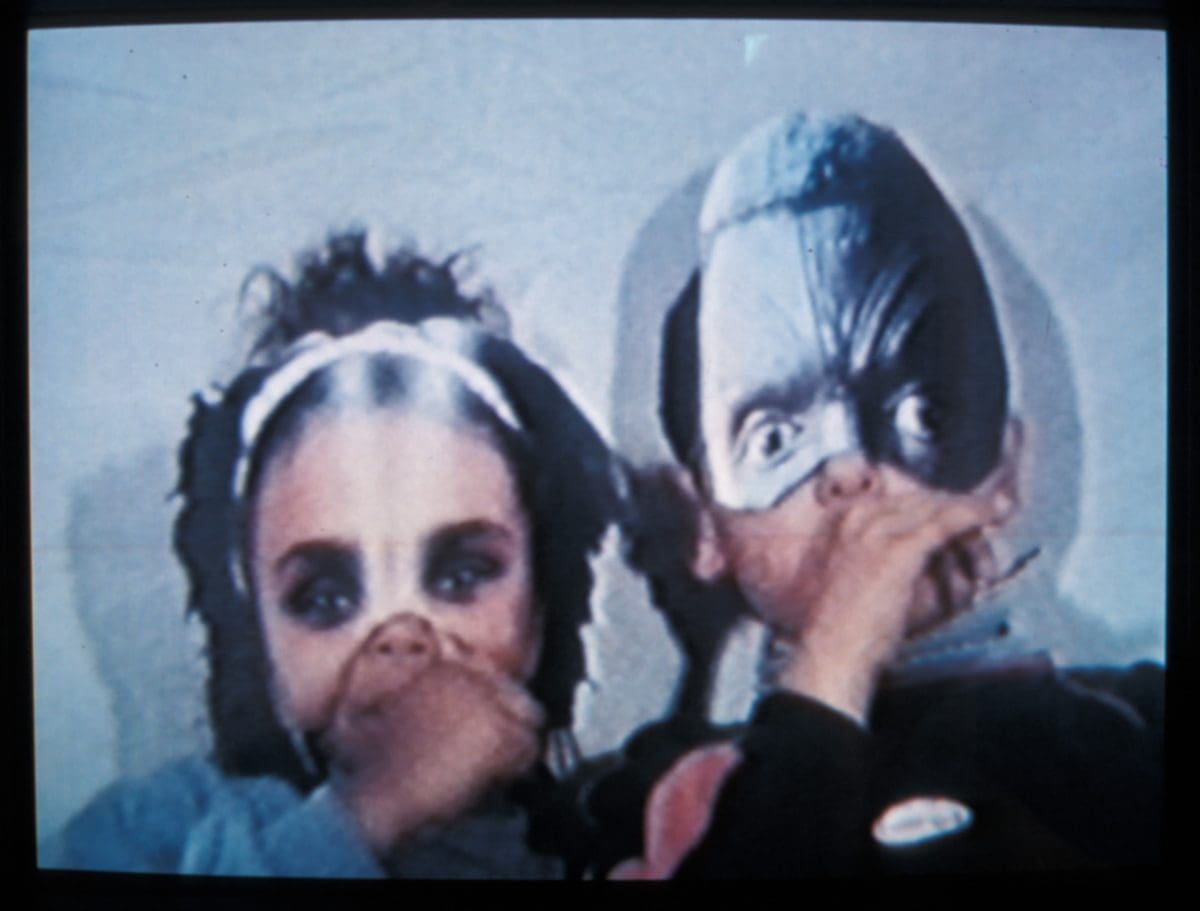
Destiny Deacon & Virginia Fraser, Forced into images, 2001, Super 8 film transferred to video, DVD format, 9:00 minutes, silent. Courtesy the artist and Roslyn Oxley9 Gallery, Sydney
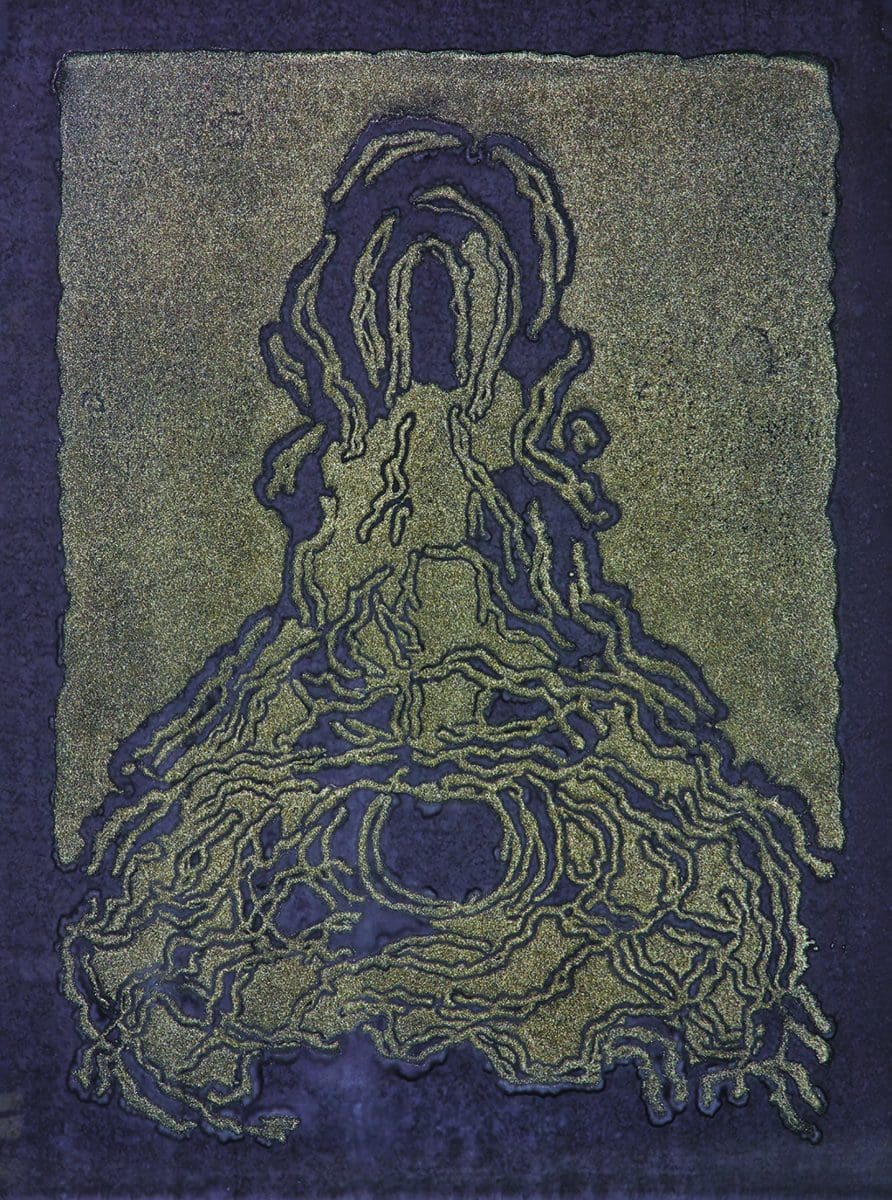
Benjamin Armstrong, The shape of things to come II, 2006–07 (detail), Linocuts printed in metallic pigment on hand-dyed paper, etched glass (9 prints), 549 x 81 x 5 cm (overall), Courtesy of the artist and Tolarno Galleries, Melbourne
H.G. Wells may have been imagining an extraordinary alternative future global history when he wrote his novel The Shape of Things to Come in 1933, but he was also drawing on the realities of the world’s then-recent history. Likewise, the inaugural exhibition at Melbourne’s much-anticipated Buxton Contemporary museum looks into the future, but also reflects back on its own collection’s evolution.
This first show for the museum takes its title both from Wells’ book and from a work with the same title by Ben Armstrong that is held in the Michael Buxton Collection. The collection is a museum-quality array of work that property developer Buxton has been assiduously collecting since 1995. He has been doing this with curatorial expertise from some of the nation’s best curators and art-world figures, including Anna Schwartz, Max Delany, Charlotte Day, Mark Feary, Samantha Comte, John Buckley and Luisa Bosci.
Since beginning the collection, Buxton’s overarching objective has been to set up a museum to house it. To share it with the public, he entered an agreement with the University of Melbourne in 2014, donating funds and the majority of the collection—341 artworks by 53 artists (including a few works from a separate Buxton family collection).
While many individual pieces from the collection have been loaned out over the years, it has only had a couple of outings en masse—at Heide Museum of Modern Art in 2002 and in 2015 at the Bendigo Art Gallery. Now, we will get to see more, with work from a diverse but significant group including Mike Parr, Pat Brassington, Daniel Boyd, Ricky Swallow, Helen Johnson, Mikala Dwyer, David Rosetzky, Peter Booth, Daniel Crooks and Francis Upritchard.
The curator of the new museum, Melissa Keys, says the inaugural exhibition has been conceived to suggest the breadth, depth and riches of the collection. “From the outset I knew that a single project could not possibly represent every artist or dimension of the holdings, or comprehensively tell the story about how the collection has been assembled by Michael, his family and creative team over more than two decades,” she says. “Instead I have taken a thematic approach and selected an array of some of the key artists around a series of meaningful but broad themes that evoke artists’ impact in shaping the world—as we know it today, and into the future—and an emerging world that we are yet to know.”
The new spaces have been an exciting challenge for Keys, especially as the rather humble exterior on the corner of Dodds Street and Southbank Boulevard belies the interior. Visitors are likely to be astonished by the ambition and presence of the space.
Among the work is Marco Fusinato’s The Infinitive 3 (2015) with five large-scale prints depicting protagonists at the precise moment of hurling a rock as part of a political uprising, demonstration or protest; and Jess Johnson’s Whol Why Wurld (2017) installation, which is suitably inspired by science fiction, cosmology and shifting notions of reality. Keys also points to Destiny Deacon and Virginia Fraser’s video work Forced into images (2001), a work made with the artists’ niece and nephew, who are recorded performing in front of the camera wearing masks. As well as Peter Booth paintings of apocalyptic visions, there is Juan Davila’s Painting is Homosexual (1983-86) which challenges the deep conservatism in Australian society and disrupt notions of ‘the normative’.
Future exhibitions at Buxton Contemporary are likely to combine commissions and new work alongside holdings in the Collection, to activate and engage spaces in new ways, while also exploring the environment, architecture, and the institutional context of the VCA’s critical and educational community. Keys says that with open-ended groupings of work with multiple interconnections and numerous possibilities for critical engagement and conversation, the main aim, however, is to highlight the impetus and origin of the Buxton Collection.
The Shape of Things to Come
Buxton Contemporary, Melbourne
9 March – 24 June